Learn how to store sourdough starter in multiple ways. Perfect for when you are not planning to do daily baking or have a vacation plan. Keep your sourdough healthy for years to come.
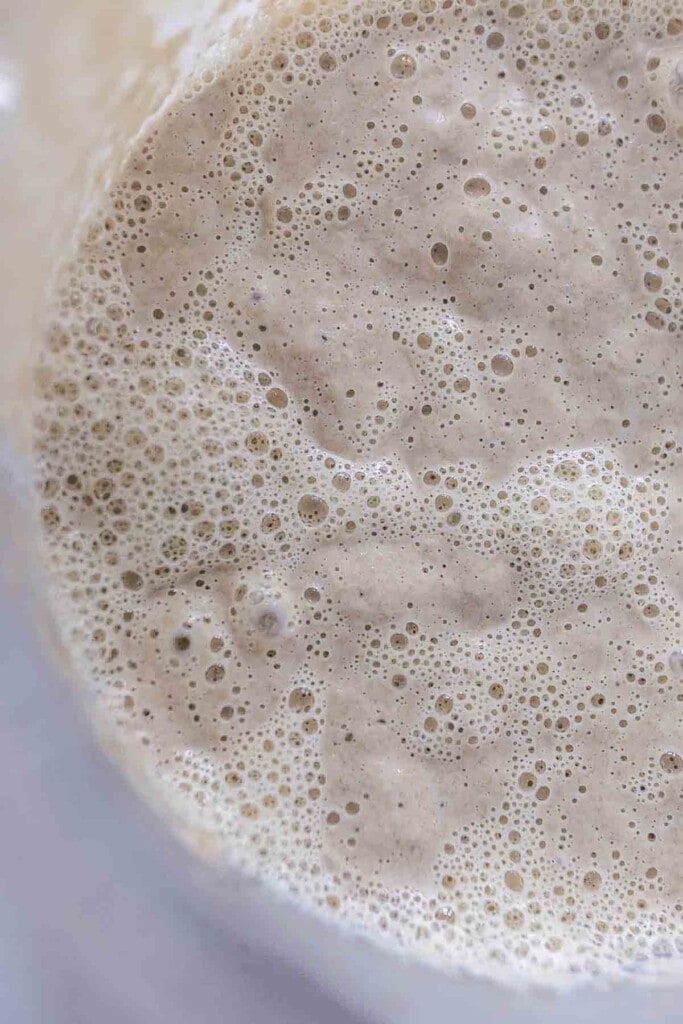
One of the most common questions that I receive is regarding how I store my sourdough starter. Being that it’s a daily question on the blog and a very relevant need for many families, it’s important to address.
Beginning your sourdough journey can be intimidating enough without worrying about who’s going to babysit the starter if and when you need to take a trip, recover from illness, or whatever other event comes your way.
It’s difficult enough to have a brave and available friend to feed your chickens, harvest your veggies, or milk your cow if you need to step away.
Thankfully, sourdough starter is a tough little thing, able to thrive with a little care even after taking a hefty sabbatical. I’ve known my fair share of people who have shoved their starter in the fridge for later use, forgotten about it for months, and yet still revived it.
While it’s actually quite normal to put your starter on hold occasionally, it’s also something that can seem overly complicated.
Fortunately, it’s actually quite simple. Sourdough starter is quite resilient and hard to kill even with long-term storage, so I’m going to go through some of the best practices for sourdough starter storage.
Maintaining A Sourdough Starter
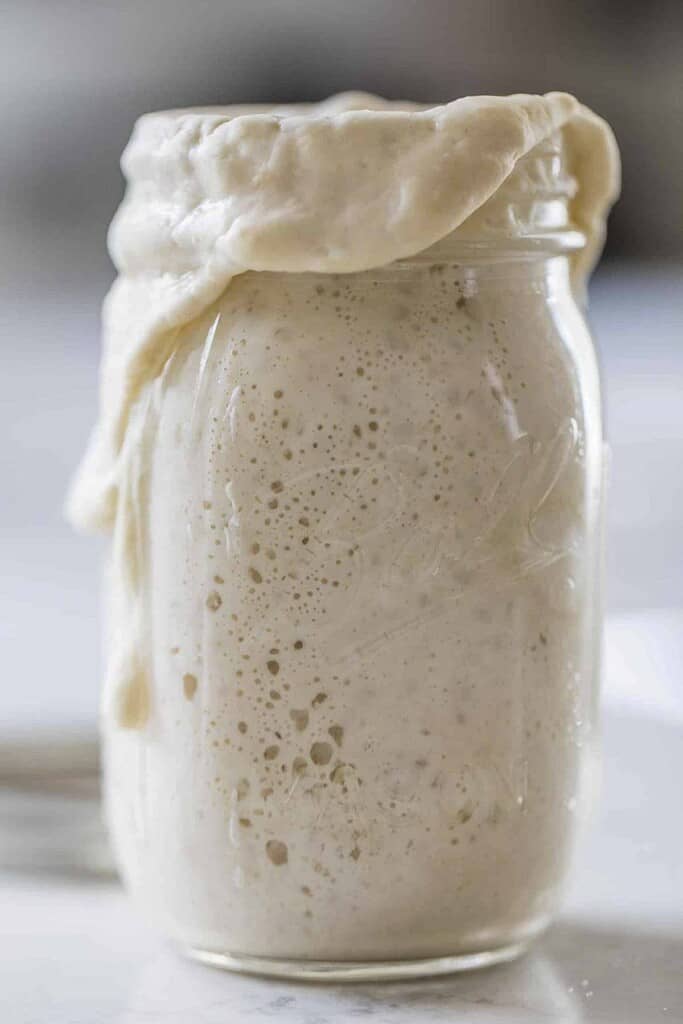
Helpful Tools:
Mason jars or other lidded glass storage containers (a ceramic or plastic container works, as well)
Spatula
Measuring cups or kitchen scale
Care Instructions:
Being that sourdough starter is a living thing, it requires food, water, and a bit of attention. Where you keep your starter determines how warm or cold it may be, which in turn determines your feeding schedule.
A warmer environment, such as next to a stove or wood burning fireplace, will require more frequent feedings, whereas keeping your starter in the fridge or even in a colder home slows the feeding schedule down drastically.
In general, you will be feeding your starter equal parts flour and water every 12-24 hours depending on temperature and your particular starter’s response. Read about this in further detail in my post here.
How To Store Sourdough Starter: Short term storage
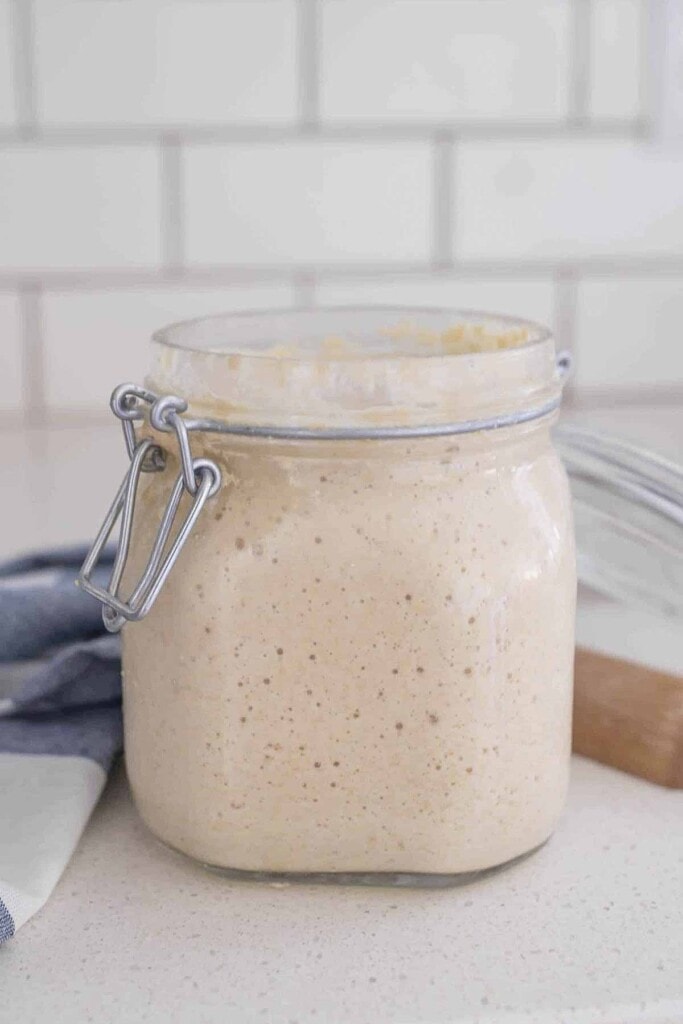
On The Counter:
Has it happened before that I’ve forgotten my sourdough starter on the kitchen counter and left it unfed for a few days? Yes. Was all well when I finally remembered it? Also, yes. It did develop a hard crust, but I just scraped it off, transferred it to a clean jar, and fed the starter.
Ideally, you want to feed your starter every 12-24 hours for it to remain healthy. I’ve found that if you forget it for a little bit, it’s usually fine.
There are exceptions, of course, and it’s a good idea to be watchful for mold, but if it looks normal, smells normal, and responds well to a resumed feeding schedule, you’re good to go.
Starter that has been stored short term on the counter may need to be fed several times before it is active enough for successful baking.
In The Fridge:
This is typically how I store my starter if I know I will not be baking with it for a few days or weeks.
For best results, feed your starter before placing it in the fridge.
Feed your starter equal parts of flour, water, and starter. Place an airtight lid on it and keep it in the fridge. You’ll determine how much to feed your starter based on the ratio of starter to flour/water. So if you have one cup of starter, feed it 1 cup of flour and 1 cup of water.
Feeding Starter In The Fridge
You will want to feed it every 7-10 days. However, I’ll say it again, this is pretty forgiving if you forget about it for a longer period of time.
Don’t be alarmed if and when the top layer of your starter is suddenly a suspicious gray liquid. When stored for longer periods, this liquid that develops is called hooch and is totally harmless. It essentially means your starter is needing more food.
Pour the hooch off and feed your starter. If you have a mature starter, you don’t have to discard if you don’t want to. If you have a new starter, you can discard half and feed.
When you want to use your starter, pull it out of the fridge and feed it equal proportions lukewarm water and fresh flour to reactivate.
If the starter hasn’t been in the fridge for a very long time, pull it out about 12 hours before you plan to bake with it and feed it.
If it has been in the fridge for a longer period, or you forgot to feed it before sticking it in the fridge, it may need more than one feeding to activate it again.
You will know it is ready to bake with when it is really active and bubbly, about doubles in size, and will past the float test.
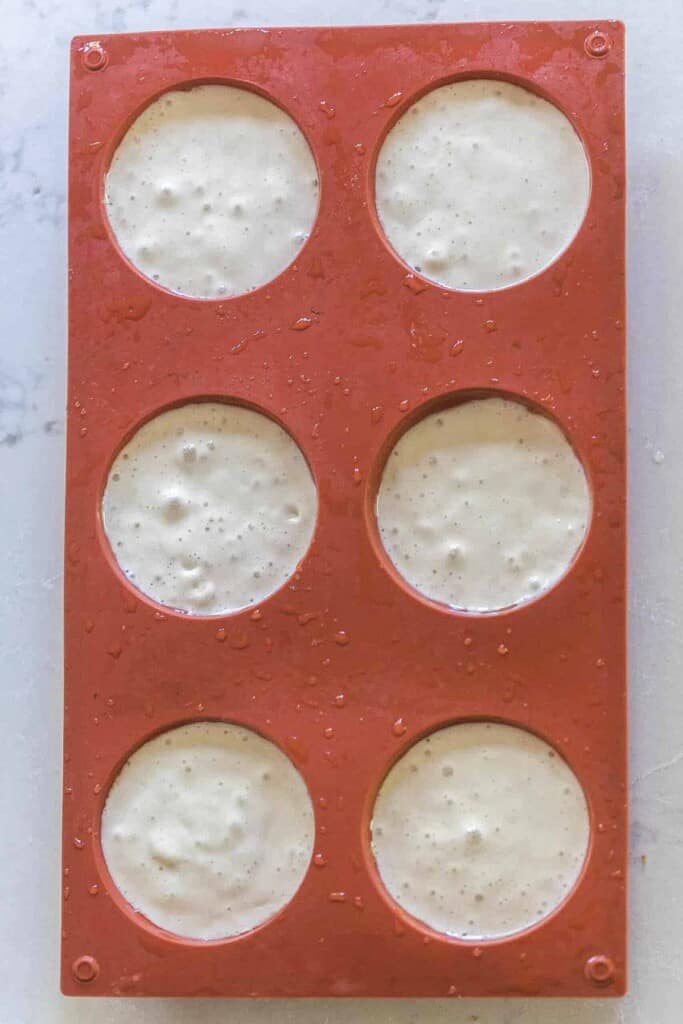
Long Term Storage
Life is certainly not predictable, so we know there are going to be times you need to step away from your sourdough starter for a long period of time and you don’t want to just start over. Here are a couple of great options.
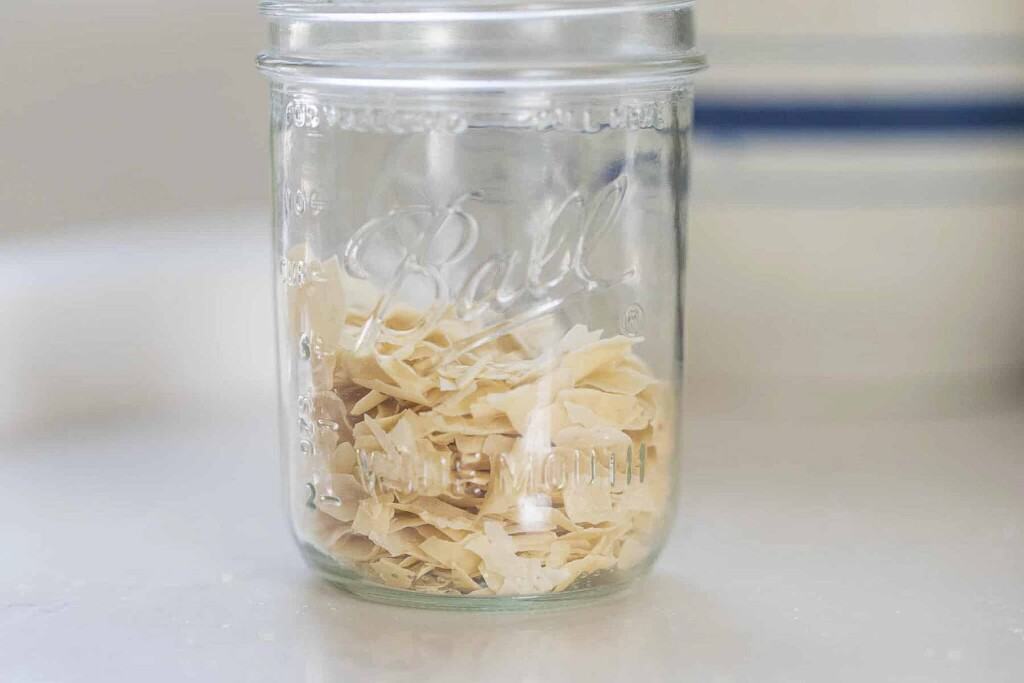
Drying or dehydrating:
Drying or dehydrating your active sourdough starter is a simple way to effectively preserve it longer term, especially if you dry it and then freeze it.
You’ll want to feed your starter 4-12 hours before drying, making sure it’s active and bubbly.
Line a baking sheet with parchment paper, then spread your starter into a very thin layer using a spatula or similar tool.
If using a food dehydrator, be sure to use the lowest setting, keeping the temperature less than 105 degrees F, preferably 95-100 degrees. Temperatures any higher can kill the yeast and good bacteria that we are enjoying in sourdough to begin with.
If air drying, position your baking sheet in a safe place where there is adequate airflow and where it won’t be disturbed. An open shelf, on top of your refrigerator, or even in a closed oven (no heat!).
Proper airflow is essential for your starter to dry out successfully.
Drying time ranges anywhere from 24 to 48 hours.
After your starter has dried completely, you can store it in an airtight container as it is, break it up into pieces to store in a smaller container, or even blend the starter into a powder for storage.
Reviving Your Dehydrated Starter:
To revive your dried starter, measure about 1.5 tablespoons of water and 1/2 tablespoon dry sourdough starter powder, stirring until dissolved. Then stir in one tablespoon of flour until combined well. Cover and allow to rest for 24 hours.
The following day, proceed with the same 1 tablespoon flour, 1/2 tablespoon water feeding, stirring and allowing to sit for another 24 hours. I like to aim for a consistency similar to pancake batter.
On the 4th day, you’ll up your feeding to 1/2 cup flour and 1/3 cup water. Cover and leave for 24 hours.
On the 5th day, there should be a lot of activity. The starter should be doubling in size, and now you’ll add one cup of flour and 1/2 cup water to the starter, mixing well.
At the end of 5 days, your starter should be bubbly and active, ready to use in all your favorite recipes.
Resume your regular feeding schedule at this point.
Find more information here.
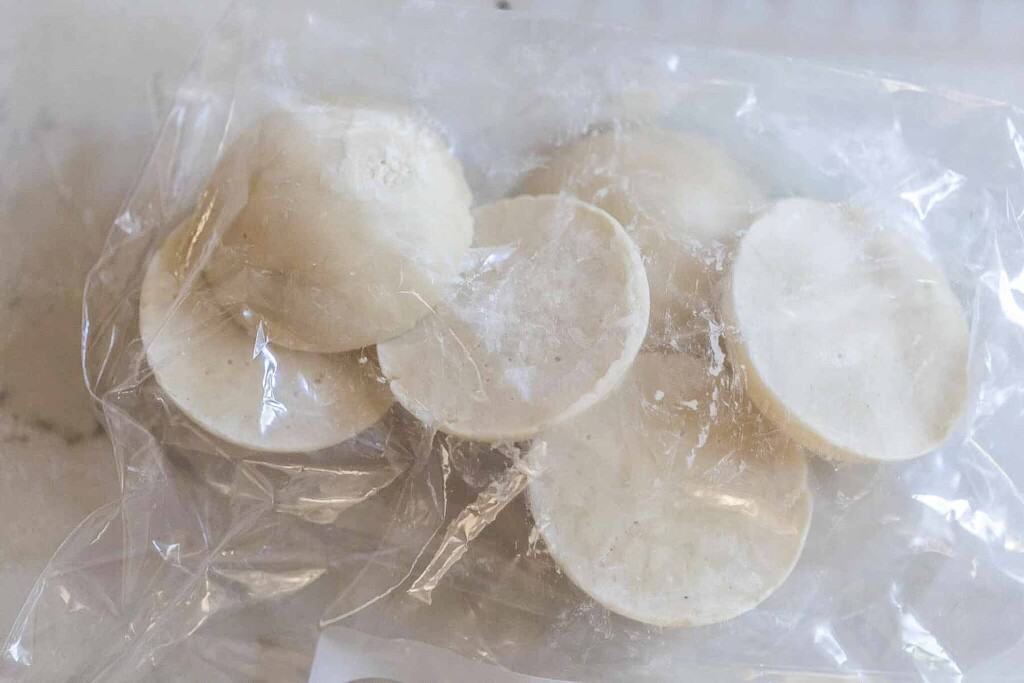
In The Freezer:
Begin by feeding your sourdough starter 4-12 hours before freezing, allowing it to become active and bubbly.
Measure your active sourdough starter into an ice cube tray, silicone muffin cups, or another small, divided container.
Freeze completely, about 3-4 hours.
Once frozen, pop out your frozen starters and store in a freezer-safe bag or airtight container.
Find more information here.
Reviving Your Frozen Starter:
Set your frozen starter out to thaw at room temperature in a jar, covered loosely.
Once thawed, feed equal parts flour and water every 12-24 hours depending on the temperature of your home and the level of activity seen in the starter. If too dry or thick, add a touch more water.
Be patient with your frozen starter. It may take some coaxing, close watching, and several feedings to revive.
How To Store Sourdough Discard
Sourdough discard is a wonderful component to many of my daily recipes, but it does occasionally get ahead of me. If you want to avoid wasting that flavorful discard, it can be stored on the counter for 1-2 days, in the fridge for about a week, or even in the freezer for months!
Room temperature discard needs to be used more quickly or the sour flavor may become overwhelming.
Refrigerated discard does ferment more slowly, but certainly is still fermenting, which is why it does still have a narrower window for use.
Frozen discard is in a dormant state and simply needs thawed to room temperature before use.
FAQ:
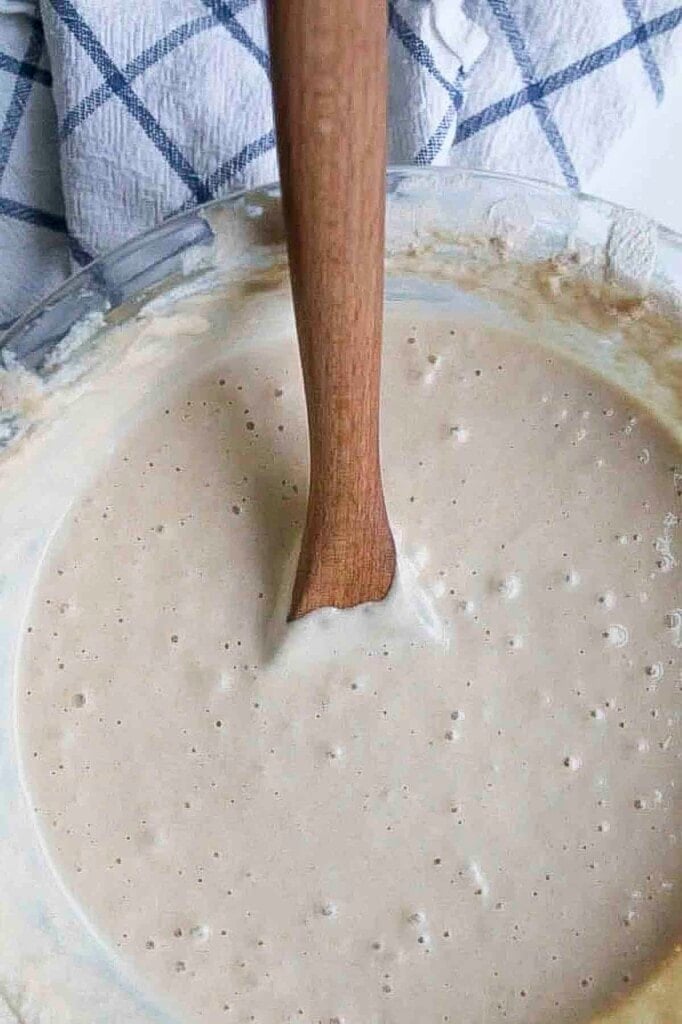
Should I keep my sourdough starter in an airtight container?
Keep your starter in an airtight container when you are storing it in the fridge. If it is being kept at room temperature to be used, cover it with a towel or a coffee filter with a rubber band. This allows it to breathe and capture the wild yeast in the air.
How do you store sourdough starter long term?
The best way to store sourdough starter long term is by drying (this can last years) or by freezing (up to 12 months).
How long will sourdough starter last in the fridge?
It will last two months in the fridge without being fed. I’ve seen it last much longer, but much depends on the health, feeding, and activity of the starter prior. Be sure to feed your starter, with its consistency being the thicker the better, before a longer term fridge storage. If there are any signs of mold, toss it.
How do you store sourdough starter after baking?
If you are not planning to use it for a few days, then it should be stored in the fridge where it can be fed every 7 days or so. Store your starter on the counter, loosely covered, for more frequent baking.
What type of container should you store sourdough starter in?
I’ve found glass canning-style jars to work very well for sourdough. A glass jar doesn’t absorb smells or flavors like other containers do, glass allows unhindered viewing of your starter, and it stores easily, offering a variety of shapes, sizes, lids and covers.
Less important, but still noteworthy – glass is beautiful and offers a great look at your yeasty pride and joy.
Stoneware could be a great option, though it does limit visibility, can be heavy to move about, and is often a bit more difficult to keep clean. Opt for a glazed stoneware so that bacteria is not given free reign inside the porous walls of the stone.
Plastic containers can also work, but plastic does degrade and leach over time, making it the least appealing option, personally.
Much of the decision of container comes down to personal preference, but you will also want to make sure it’s open enough to reach your starter and clean it out thoroughly.
Should my sourdough starter be kept in an airtight container?
No, (unless you are keeping it in the fridge) your starter is a living thing and needs to breathe. You want to keep it covered so that dust and hair and other messes do not find their way in, but too much air exposure can cause the starter to form a crusty top layer which is nice to avoid. Whether you use a tea towel or a loose fitting lid, you can still keep your starter clean while allowing it to breathe.
How do you know a sourdough starter is ready to make bread?
There are a few ways to tell if your sourdough starter is mature enough to make a loaf of bread. First, after you feed it, it should about double in size and get really bubbly within 4-12 hours.
Second, if your starter passes the float test, it is ready to bake. The float test is where you take a small dollop of starter and place it in a small jar of room temperature water. If it floats, it means it is ready to start some bread dough.

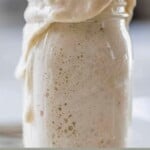


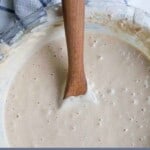










I found a glass container that has a wooden lid. The lid has a silicone band to make it airtight. When storing the starter in the refrigerator would this container be ok to use?
That should work!
Silly question, How big is that glass jar you use for your starter? I have a family of 6 to feed, we are heavy bakers. I just don’t think a small jar will hold enough starter to get us through a day. Your videos have been helping me a lot.. Thanks so much <3 🙂
Mine is a gallon sized jar!
My starter has been in the fridge for almost a year. My husband has had some serious health issues and I’ve ignored baking bread. So my starter has houch on it but no mold. Can itbe revived for baking sourdough again?
I would definitely give it a try! I would feed it every day for a week, like you would if you were making a sourdough starter. That should give it a good boost.
Lisa, please make this a pdf we can print, excellent information for reference. Is this included in your new cookbook?
Yes, this is included in the book!
I stored my sourdough in the fridge in a sealed jar for close to 3 weeks while we were gone. When we returned, the dough has a separated layer of light black liquid on the top. I’m guessing this is not healthy anymore, but tried to search on line and didn’t find any answers. Does anyone know if it’s OK to stir and still use this batch or is it spoiled?
Thanks for any input on this!
Your sourdough is just fine. That is called hooch and it’s a sign that your starter is hungry and needs to be fed again.
How do you know how much starter you have, and how crucial is it that the flour/water portions are equal to the starter portion? Also, how do you prevent your jar/bowl from overflowing? For example, I removed 1 cup discard and then just eyeballed my starter at about 2 remaining cups, so I added 2 cups water and 2 cups flour; but now my bowl is almost full, so I’m not sure how well the doubling of the starter is going to go…
Great information. Especially for us just starting on this journey.
If storing starter in the fridge and you’re ready to bake with it, does it need to come to room temp before feeding or can you feed it as soon as you take it out of the fridge?
I was given a beautiful bubbly starter. I put it in the fridge for 4 days before trying to use it. I feed it pancake batter mix of all purpose unbleached flour and warm bottled water. I stir it well— it doesn’t do anything. I’ve done this for a week. What is going wrong?!
How long are you letting it sit on your counter top after feeding it?
I love your posts! I used your sourdough starter and beginners sourdough this weekend and my loaves are amazing!